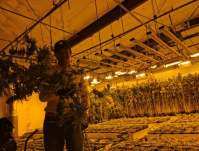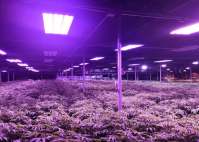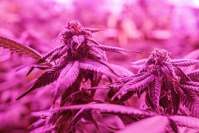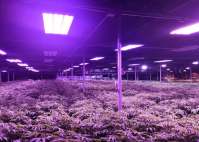Nowadays, growers who plant in greenhouses will choose to use LED grow lights to supplement light, and LED grow lights can improve plant planting efficiency. There are many aspects to pay attention to when using.
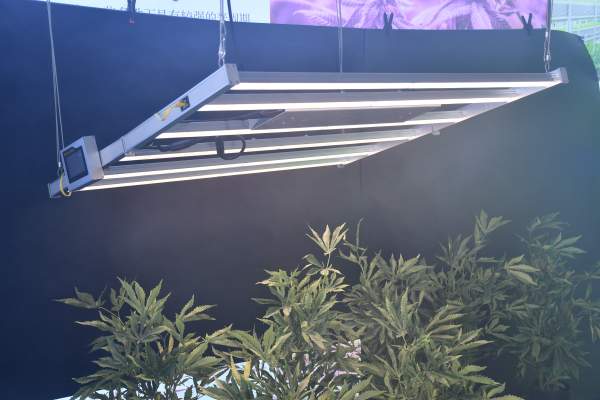
1. Reasonable collocation. When planting different varieties and different heights of vegetables in the greenhouse, it is necessary to take into account the direction of sunlight in the northern hemisphere, according to the principle of north high and south low, reasonable collocation, parallel arrangement of cotyledons when transplanting, and strict cultivation specifications. , The row spacing is consistent, which can make the plants grow neatly and minimize the shading of LED grow lights between plants.
2. Change the method of scaffolding. When cultivating cucumbers and kidney beans and other racking vegetables in a greenhouse, waste film can be used as a hanging rack instead of the racking, which can effectively improve the utilization rate of LED grow lighting. The method is to insert a 25 cm long bamboo stick along the top of the arch frame and insert a 25 cm long bamboo stick at the root of the cucumber and bean, then cut the old film into strips, and tie it vertically to the bamboo stick and iron wire, when the cucumber and bean are stretched out. After the vine, coil the vine on the old film strip, and then coil it every 5 to 7 days. If you need to set up a rack, use the approach of tilting the front row to the south, the middle row upright, and the rear row tilting to the north, which can increase the light utilization rate to about 10%.
3. Keep the shed film clean. It was investigated that a layer of water droplets attached to the canopy film can reduce the light transmittance to 30% to 50%; after the new film is used for 2 days, 10 days and 15 days, the light in the canopy can be reduced in turn due to dust. You should insist on cleaning the shed surface. You can tie a soft cloth strip to a wooden pole every morning after the straw curtain is opened in the greenhouse to clean the dust and debris on the plastic film shed surface, which can increase the light to more than 30%. But you insist. To reduce the water droplets on the shed film, you can use the shed film to cover; change the irrigation method, use the under-mulch irrigation method and hose for drip irrigation; clean the water droplets on the shed film with a clean rag in the morning; immediately release the air to reduce humidity after irrigation, etc. , Both have very good results. After it snows, the snow on the shed film should be cleared in time to increase transparency and light intake.
4. Uncover the curtains at the right time Properly uncover the curtains early and delay the curtains, which can prolong the sunshine time of the greenhouse. The curtains are usually uncovered 0.5 hour to 1 hour after the sun comes out. The time to cover the curtain should be half an hour before the sun sets, and the curtain should also be uncovered on a cloudy day in order to get the scattered light. The curtains are generally not opened when it is snowing, and can be opened after the weather turns clear.
5. Utilize the reflective curtain Use a 3 meter long and 2 meter wide aluminum-plated reflective curtain to hang on the upper end of the rear column of the plastic greenhouse, and the lower side is perpendicular to the ground. In this way, the ground can be brightened by about 20%, and the shed temperature can be raised to a certain extent, which is conducive to the healthy growth of vegetables. The silver-gray film on the ground can also increase the intensity of light between plants.
6. Choose Yaorong Technology LED grow lights, which can emit red light with a fixed wavelength of 610nm-720nm and blue light with a wavelength of 400nm-520nm. Among them, red light with a wavelength of 610nm-720nm can be absorbed by chlorophyll. 75%-85%, the red light of this wavelength is the synthesis of plant chlorophyll and has a significant impact on photosynthesis and photoperiod effects. Blue light with a wavelength of 400nm-520nm. Chlorophyll can absorb more than 90%. It is a strong band for plant growth and photosynthesis. The absorption ratio of chlorophyll and carotenoids is the largest. It can promote the growth and growth of crop roots. Decrease, the leaf and stem become thicker; make the crop strong, and the disease resistance ability is obviously enhanced.
Greenhouse planting solutions
(1) Reasonable light supplementation of LED grow lights is one of the important reasons that affect the harvest of vegetables in greenhouses. Vegetables will undergo photosynthesis under the irradiation of LED grow lights, so that the light compensation point of plants can reach and exceed, combined with the moisture, temperature, and temperature in the greenhouse. Humidity, etc. make plants grow better.
(2) Choose plant varieties for planting according to market demand. Choosing the right plant varieties is the first step to open the market. Reasonable use of different types of LED grow lights to fill light, and good time to market is an important part of occupying the market.
(3) One thing to pay special attention to is the air circulation problem in the shed. If the temperature in the shed is too high, it will cause moisture loss in vegetables and affect the growth of plants; when using LED grow lights, don’t worry about this problem, LED grow lights emit The heat is small and will not cause such problems.
LED grow light greenhouse planting advantages
High light efficiency and energy saving
The electro-optical conversion efficiency of LED grow lamps is more than 20 times that of incandescent lamps, 3 times that of fluorescent lamps, and nearly 2 times that of high-pressure sodium lamps. The application of LED grow lights can greatly reduce power consumption, thereby achieving energy saving.
Spectrum customization
LED grow lights can cover dozens of monochromatic lights with wavelengths. And can realize monochromatic light composite spectrum or full-spectrum white light through monochromatic light excitation phosphor powder, and realize the spectrum customization of different plants.
Adjustable spectrum
The LED grow lights with different light colors can be controlled separately to achieve the function of adjustable spectrum. At present, the adjustable spectrum plant lights on the market are mainly used for scientific research, and the plant lights with adjustable light intensity have been widely used in production.
Less fever
It can touch plants at close range without causing problems such as plant leaves and operators burning. Thanks to the low heat generated by LED grow lights.
long life
The theoretical life of LED grow lights is as high as more than 100,000 hours. Subtracting the influence of various factors, the lifespan of the LED grow light can be left with 50,000 hours. Compared with traditional plant lights, the light decay of LED grow lights after 36,000 hours of operation is still less than 10%. The fluorescent lamp usually has a light decay as high as 30% after 10,000 to 15,000 hours of operation.
Safer and more environmentally friendly
Compared with other traditional plant lights, LED grow lights have no mercury or other polluting elements, and are more energy-saving in terms of power saving. The power supply adopts waterproof male and female plug connections, and has the advantages of IP65 waterproof rating.
These make LED grow lights more popular in the market, and are deeply loved by greenhouse growers, industrial growers and plant research and planting units. The development trend of LED grow lights will get better and better in the future.


